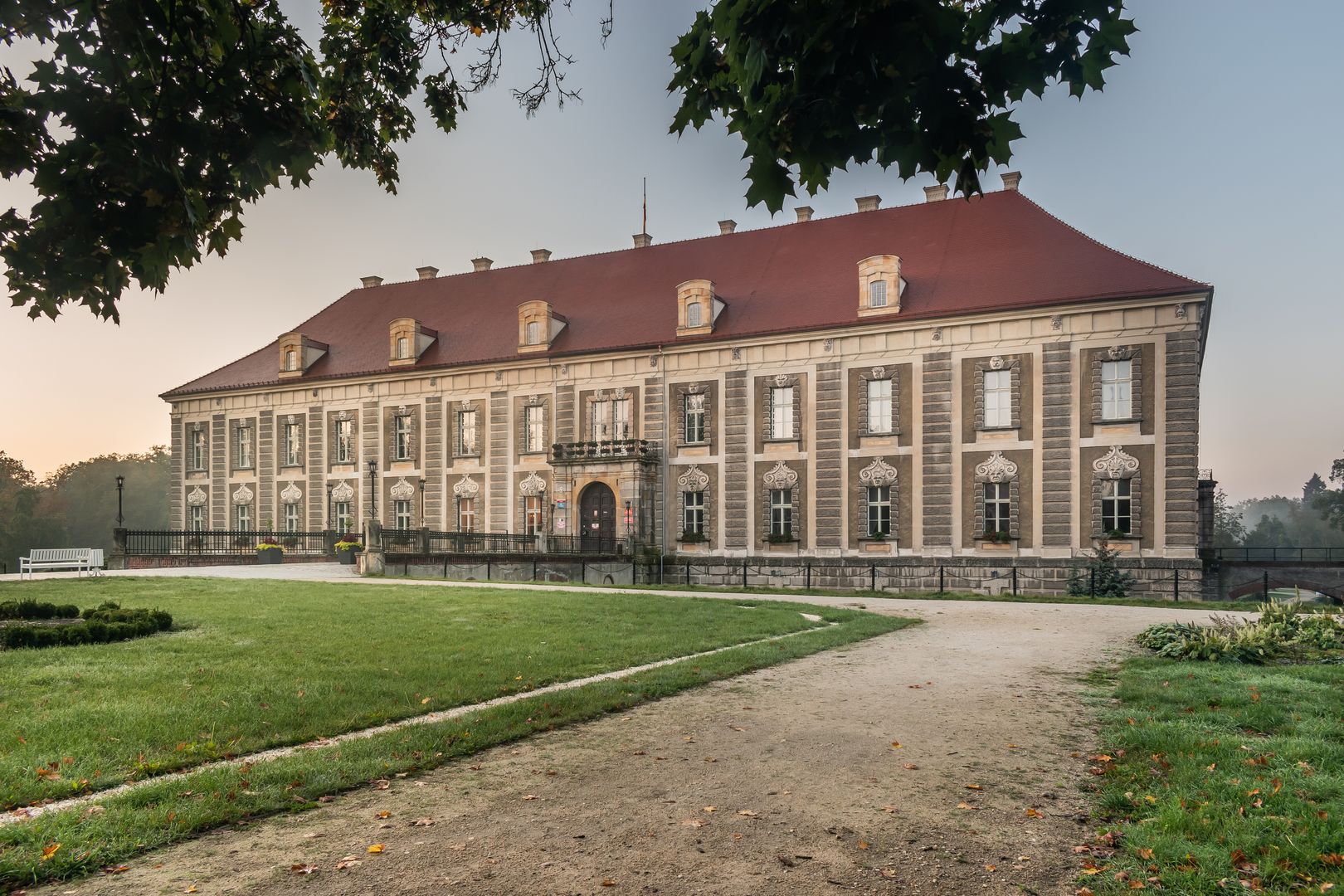Lobkowitz Palace in Żagań
7.67

Overview
The Lobkowitz Palace in Żagań is a Baroque monument built between 1631 and 1686, located in the southeastern part of the city, on Szprotawska Street, surrounded by residential blocks and a landscape park. It was constructed on the site of a medieval Piast castle, and its history is closely linked to the Duchy of Głogów-Żagań. After the imperial sale of the duchy to Albrecht Wallenstein, the construction of a defensive residence began based on a design by Vincenzo Boccaccio. However, the work was repeatedly interrupted due to military conflicts and Wallenstein's death.
Construction resumed under Prince Václav Eusebius von Lobkowitz, and the project was continued by Antonio della Porta, who introduced changes inspired by the ancestral seat of the Lobkowitz family. The palace took the form of a four-wing structure with arcaded blind windows and richly decorated details. After various reconstructions and transformations, in the 20th century the palace became the Żagań Palace of Culture. Its architecture includes Baroque elements such as rusticated facades, mascaron ornaments, and magnificent interiors with marble floors and Neoclassical decorations.
Little of the original furnishings have survived in the palace, and some elements were lost due to wars and transformations. There is also a legend associated with the mascarons, which tells the story of a sculptor and his pact with the devil. Today, the palace serves cultural functions and remains an important landmark in Żagań.
Location
Tickets
Powered by GetYourGuide
2025 Wizytor | All Rights Reserved